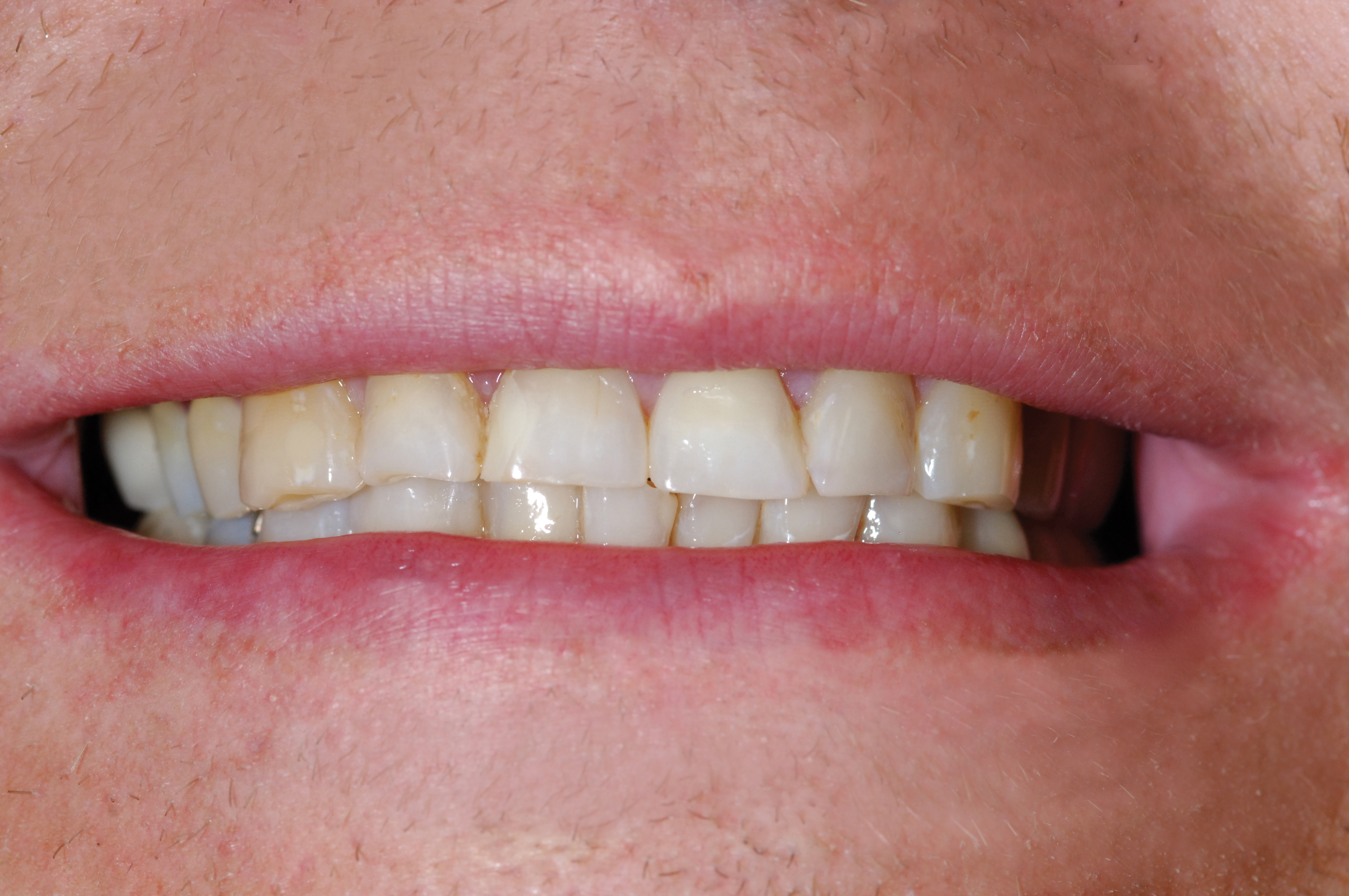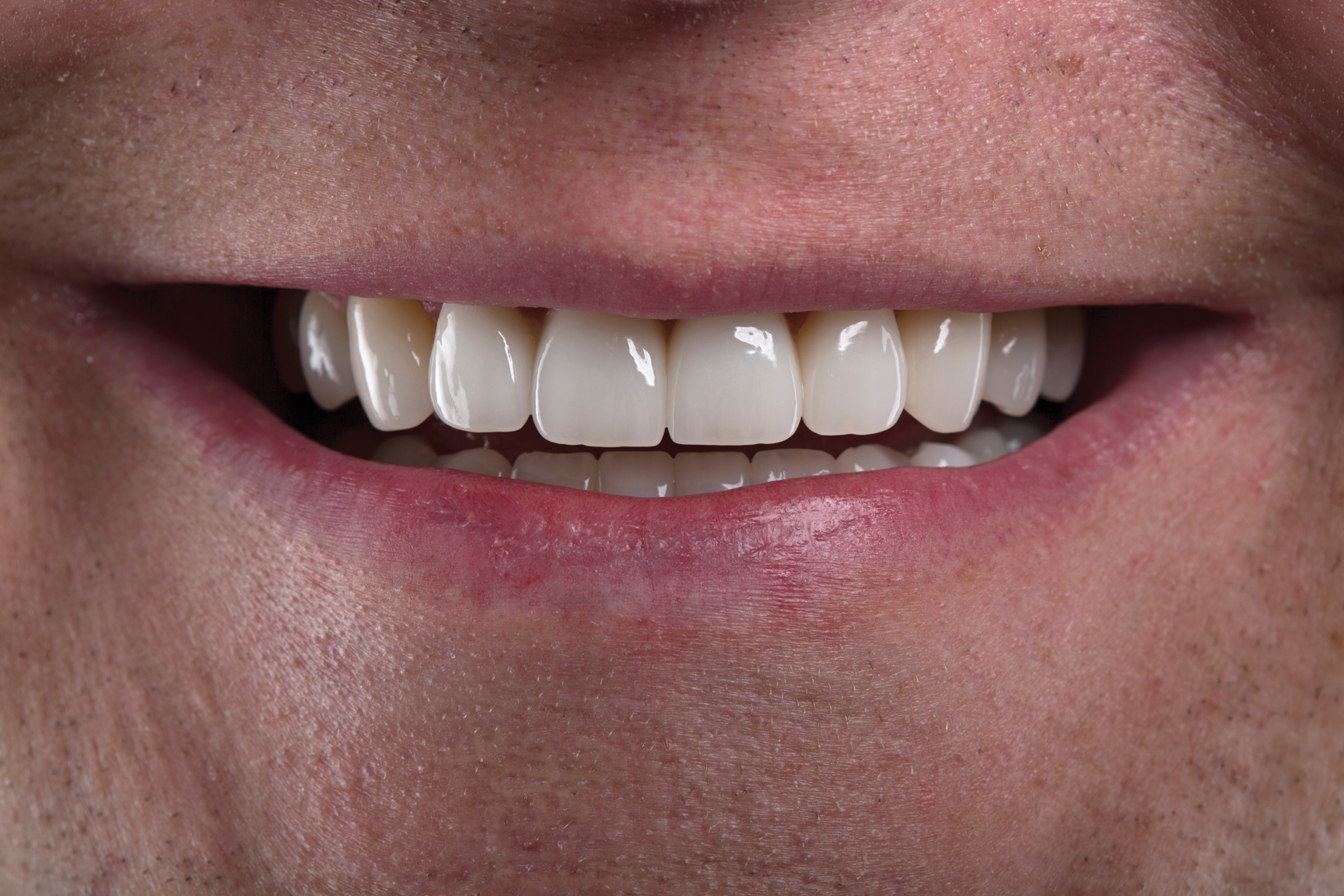
For years I was embarrassed over the appearance of my teeth. Especially being a dental ceramist. I felt like every time I told someone what I did for a living, their eyes immediately went to my teeth. The unasked question always seemed to be, “Why don’t you fix your own teeth?” I felt like my abilities as an Elite ceramist were being judged by my own mouth.
I started in the dental industry while I was still in high school. A “basement lab” owner who lived in the area was looking for an apprentice and had approached the art department at my school. He wanted someone with artistic talent and a good eye that he could train to do things his way. I tried out and discovered that I had quite a knack for it. Until then I never even knew that a job as a dental ceramist existed, and also hadn’t really given much thought or care to my teeth.
After several years and a good start in this field, I came to work at Arrowhead Dental Lab where my real education began. Over the years I have had the opportunity to work and train with some of the best technicians and clinicians in the world. Not only was I trained by Arrowhead’s top ceramists, but I’ve also participated in countless clinics and seminars on topics ranging from advanced porcelain techniques to neuromuscular treatments in dentistry. Through this exposure I became aware of the problems in my own mouth. I started to notice the cosmetic issues and how the functional problems and wear on my teeth were getting worse. My anterior teeth were very flat and getting shorter every year. My smile line went up hill on the right. Each year I was adding at least one or more posterior crowns due to wear and fracture and my TMJ was starting to click. Nothing was hurting however, so I kept putting off any kind of treatment.
Aside from the problems I was noticing, I started to become more and more self-conscious about my smile. On my 34th birthday a coworker asked me my age. When I told her she smiled and said, “Ben, don’t be so coy, you can tell me.” She was sure that I was in my early- to mid-forties and thought that I was teasing when I said 34! A close friend told me it was because of my teeth. He said if I just got them fixed I’d be fine.
They say that the plumber always has leaky pipes in his house and that was me. I worked on full mouth reconstructions and cosmetic restorations every day. I had seen the difference it could make in somebody’s life and knew the health problems and jaw issues that I’d face if I left my mouth untreated. I’d fixed my wife’s teeth and my mother’s. Committing to doing it myself, however, was another problem. I knew what needed to be done. If I was going to do it, I wanted to do it right. That meant time and, of course, money.
It also meant the right treatment. I spoke with several dentists about treatment plans, but most only offered what I felt would be temporary solutions. One offered to veneer the top eight teeth to satisfy my cosmetic concerns, but I knew that wouldn’t fix the functional problems and would only lead to broken veneers. Another said he would restore cuspid rise by doing the top eight and bottom six, but that did nothing to resolve the problems with my bite, which caused premature wear in the first place. So I put it off.
When the opportunity came to participate in the Full Arch Reconstuction (FAR) course at Arrowhead Dental Lab, I finally decided it was time. I knew that the FAR course dealt with and taught about the very issues I was concerned with and I knew I would get the best treatment available. Before getting in the chair, however, I started splint treatment to restore my bite to its proper position. Using a TENS unit, my dentist was able to measure the position that the muscles in my jaw wanted to be at naturally. Then an appliance was made that held my bite in the proper position. The therapy lasted several weeks but I felt the difference immediately. My jaw felt great! It was time to do the work.
Doctors often make the worst patients and I think that the same could be said about technicians; however, due to careful case planning with Dr Downs, I was confident that everything was going to be fine.
We first restored the full upper arch. At the prep appointment, temporary crowns were made to an ideal arch form and occlusion by using a sil-tech matrix made from the diagnostic white wax up. Then, “snow-cap” temporaries were placed on the lower arch which cemented to the top of my teeth and fit my new occlusion. I then made the crowns using Emax porcelain and Arrowhead’s Elite porcelain technique. I chose Emax due to its beauty and exceptional strength, which works nicely with the advanced cut back and layering we use for our Elite restorations.
Working on my own case was not what I had expected. It was just awful trying to please the world’s pickiest patient. As with the temporaries, the final crowns were made to an ideal arch form and occlusion was verified with a matrix. Then came the seating appointment. Crowns were placed and the process was repeated on the lower arch.
Very few people have ever said anything about my new teeth. Other than those who know, no one seems to notice. I think that most just assume I have naturally nice teeth. My crowns look very lifelike and vibrant, not artificial. They are much more age-appropriate than the worn-flat teeth I had before, and no one questions my age. I love to flash a big smile when I talk to people, and when they ask what I do for a living, I no longer cover my teeth when I tell them.











